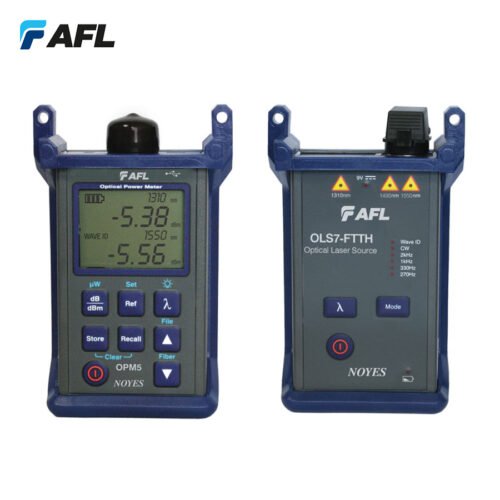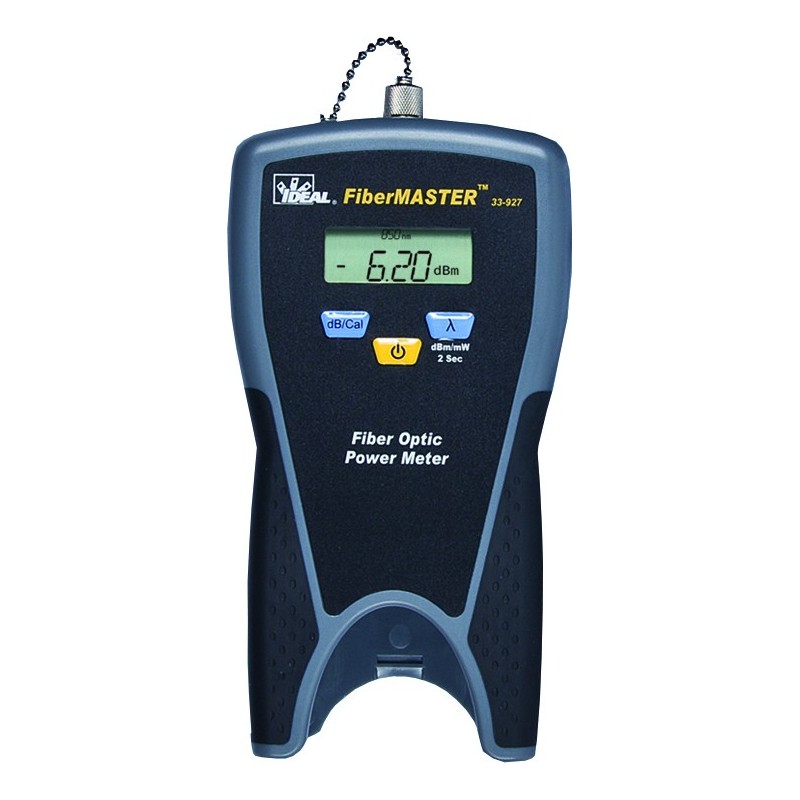A step-by-step guide for using fibre testing equipment effectively
Recognizing How an Optical Measurement System Enhances Precision in Industrial Applications
Optical measurement systems play an important function in improving accuracy throughout various commercial applications. By leveraging sophisticated innovations such as laser interferometry and 3D imaging sensing units, these systems supply high-resolution, non-contact measurements. This capability minimizes the threat of damaging delicate parts while making sure precision. The impact of these systems extends past plain dimensions. Exploring their benefits, applications, and future fads discloses an intricate landscape of innovation and challenges that values better evaluation.
The Basics of Optical Measurement Systems
Optical measurement systems work as important devices in numerous commercial applications, providing specific information collection and evaluation. These systems use light as a key ways of measurement, leveraging optical concepts to evaluate dimensions, settings, and surface attributes of objects. They integrate components such as lasers, electronic cameras, and sensing units, which function together to catch high-resolution images and data.
The innovation enables non-contact measurements, minimizing the danger of damaging delicate components. Optical measurement systems are versatile, locating utility in quality control, setting up verification, and dimensional evaluation throughout various fields. They are particularly efficient in atmospheres where typical measurement methods may fail, such as gauging intricate geometries or observing quick activities.
As industries proceed to advance, the integration of optical measurement systems will certainly remain important for ensuring precision and efficiency, ultimately improving item quality and operational productivity in numerous manufacturing processes.
Trick Technologies Behind Optical Measurement
Key innovations such as laser interferometry methods and 3D imaging sensing units play an important function in the effectiveness of optical measurement systems (optical fibre diameter analyser). These modern technologies enable specific measurements and in-depth analysis in numerous commercial applications. Comprehending their performances is important for using the complete capacity of optical measurement systems
Laser Interferometry Techniques
Various laser interferometry techniques have actually revolutionized the area of optical measurement, supplying unmatched precision and precision in different industrial applications. These methods make use of the interference of coherent light waves to determine range, displacement, and surface irregularities with nanometer-level precision. Usual methods include Michelson interferometry, which splits a beam of light and assesses stage shifts, and Fabry-Pérot interferometry, recognized for its high resolution in gauging little changes. Additionally, laser Doppler interferometry employs frequency shifts to analyze speed, making it indispensable in dynamic dimensions. The flexibility of these techniques enables their integration into varied manufacturing procedures, boosting quality assurance and ensuring adherence to rigid resistances. As an outcome, laser interferometry proceeds to play an essential role ahead of time commercial measurement criteria.
3D Imaging Sensors
Innovations in measurement technology have actually led to the development of 3D imaging sensing units, which play a considerable function in optical measurement systems. These sensors catch three-dimensional information with various methods such as triangulation, time-of-flight, and organized light. By accurately rebuilding the shape and measurements of items, 3D imaging sensing units improve the accuracy of measurements in commercial applications. They provide real-time feedback, helping with quality assurance and making sure that elements fulfill strict requirements. In addition, their capability to run in difficult environments, such as varying lights conditions, makes them important in making processes. As markets significantly adopt automation, the assimilation of 3D imaging sensing units into optical measurement systems is expected to drive additional improvements in effectiveness and precision.
Benefits of Optical Measurement in Industry
Standard measurement methods have long been the requirement in industrial settings, optical measurement systems offer considerable advantages that enhance precision and efficiency. These systems use light to catch data, leading to high-resolution dimensions that are typically unattainable with standard methods. The non-contact nature of optical measurements reduces the threat of damaging delicate elements during the analysis process. In addition, the rate of optical measurements allows for quick data acquisition, helping with timely decision-making in busy commercial settings.
Optical systems are versatile, capable of measuring various materials and shapes without the demand for considerable recalibration. This adaptability adds to improved workflow and performance. In addition, the automation potential of optical measurement systems reduces human mistake, guaranteeing consistent quality assurance. On the whole, the assimilation of optical measurement innovation represents a dynamic change in the direction of enhanced precision and reliability in commercial operations, eventually bring about boosted product top quality and functional efficiency.
Applications of Optical Measurement Systems

Optical measurement systems play a crucial function in enhancing manufacturing procedure optimization by offering specific data for decision-making. These systems assure high quality control assurance through real-time surveillance and analysis of manufacturing metrics. As industries significantly adopt these modern technologies, their impact on effectiveness and item dependability comes to be noticeable.
Manufacturing Process Optimization
Enhancing manufacturing process efficiency is progressively dependent on the integration of optical measurement systems. These systems supply real-time information on various specifications, permitting manufacturers to assess processes with a high degree of precision. By making it possible for precise measurements of measurements, surface qualities, and product residential properties, optical measurement systems facilitate the identification of ineffectiveness and traffic jams in manufacturing lines. The prompt responses from these systems encourages designers to make educated decisions, resulting in enhanced machining, assembly, and completing processes. Furthermore, the ability to keep track of conditions continuously enables flexible changes, decreasing downtime and waste. As markets aim for higher productivity and lowered operational costs, optical measurement systems emerge as crucial tools for improving production process optimization.

Quality Control Guarantee
The integration of optical measurement systems greatly effects quality control guarantee in industrial setups. These systems offer specific and non-destructive measurements, making it possible for suppliers to identify problems and discrepancies early in the manufacturing process. By making use of advanced imaging methods, such as laser triangulation and interferometry, optical measurement systems guarantee that elements fulfill strict requirements. This facilitates real-time tracking, lowering waste and reducing the danger of defective items reaching the market. In addition, the data collected click to investigate can be examined to improve manufacturing procedures further, causing continuous enhancement. Inevitably, the fostering of optical measurement systems enhances dependability and consistency in quality assurance, fostering better self-confidence amongst stakeholders and customers alike in the end products provided.
Situation Studies: Effective Executions
Numerous industries have effectively incorporated optical measurement systems to improve their functional performance and item quality. In the automobile industry, a prominent manufacturer took on a laser triangulation system to check the alignment of vehicle parts. This application considerably decreased assembly mistakes, causing enhanced safety and decreased costs.
In the aerospace sector, a leading airplane producer used optical assessment for precision measurements of wind turbine blades, accomplishing a reduction in manufacturing resistances and much better performance standards.
A consumer electronic devices business executed optical measurement technology throughout the production blog here of mobile phone displays, resulting in enhanced high quality control and a decrease in faulty items.
These study illustrate just how optical measurement systems not just enhance precision but likewise contribute to general functional efficiency, showing their value throughout various markets. By dealing with particular demands, these systems have verified to be indispensable devices in modern-day industrial applications.
Challenges and Limitations of Optical Measurement
While optical measurement systems use substantial advantages in different commercial applications, they are not without their challenges and restrictions. One significant concern is level of sensitivity to ecological conditions, such as temperature changes, humidity, and dirt, which can detrimentally affect measurement accuracy. Furthermore, optical systems often require accurate placement and calibration, making them susceptible to human error during setup and operation. One more restriction is the capacity for disturbance from ambient light, which can distort measurements and require complicated filtering methods. Certain materials and surfaces may present problems, as reflective or clear features can lead to irregular analyses. The price of top notch optical elements and systems can likewise be a barrier for some markets, limiting widespread adoption. Finally, specialized training is frequently required for personnel to effectively operate and preserve these systems, contributing to the total intricacy and functional obstacles.
Future Trends in Optical Measurement Technology
As advancements in innovation remain to shape commercial procedures, the future of optical measurement systems is poised for significant development. Emerging fads suggest a change in the direction of enhanced assimilation of expert system read more and equipment knowing, allowing systems to evaluate information in real-time, determine patterns, and boost decision-making processes. On top of that, the growth of miniaturized sensors and progressed optics is anticipated to result in more portable and versatile measurement remedies, making them obtainable for a broader series of applications.
Additionally, the unification of 3D imaging and high-resolution capabilities will permit extraordinary accuracy in measurements, which is important for markets such as aerospace and automobile. The promote automation and Sector 4.0 will also drive the demand for optical measurement systems that can conveniently user interface with various other technologies. As these trends unfold, optical measurement systems will likely end up being important to attaining better performance and accuracy throughout numerous commercial fields.

Regularly Asked Inquiries
Just How Do Optical Measurement Systems Compare to Standard Measurement Techniques?
Optical measurement systems provide higher precision and rate compared to traditional approaches - optical measurement system. They reduce human mistake, improve data collection efficiency, and give real-time results, making them increasingly liked in numerous commercial applications for specific measurements
What Industries Benefit the A Lot Of From Optical Measurement Systems?
Optical measurement systems considerably benefit sectors such as aerospace, automobile, and electronic devices. Their capability to provide high-precision measurements boosts top quality control, lowers manufacturing errors, and boosts overall performance, making them vital in affordable production atmospheres.
Can Optical Measurement Systems Be Customized for Certain Applications?
Optical measurement systems can certainly be personalized for particular applications. By readjusting parameters such as wavelength, resolution, and calibration methods, sectors can tailor these systems to satisfy unique precision and precision requirements successfully.
What Is the Upkeep Requirement for Optical Measurement Systems?
The maintenance demands for optical measurement systems generally include normal calibration, cleansing of optical components, and software program updates. Abiding by these methods warranties precision, reliability, and long life of the measurement tools in various applications.
Exactly How Do Environmental Elements Impact Optical Measurement Precision?
Ecological factors, such as temperature changes, humidity, and dust, significantly effect optical measurement precision. These components can misshape light courses and disrupt sensing unit analyses, inevitably endangering the reliability and precision of measurements in industrial settings.